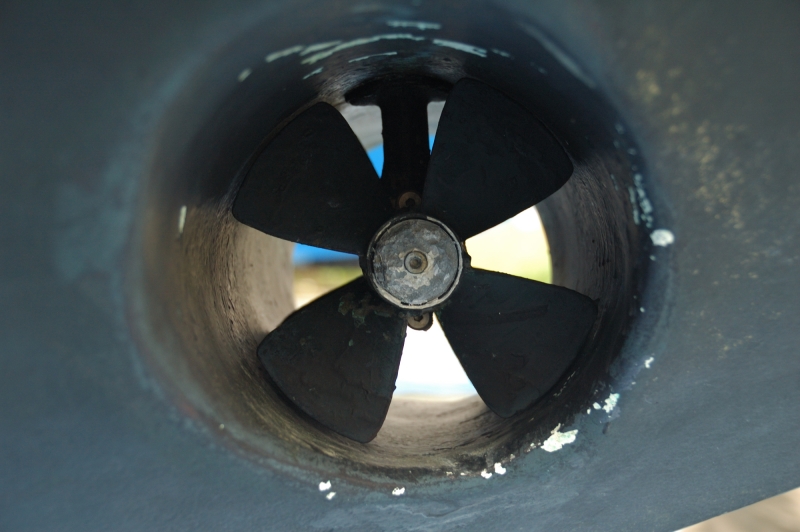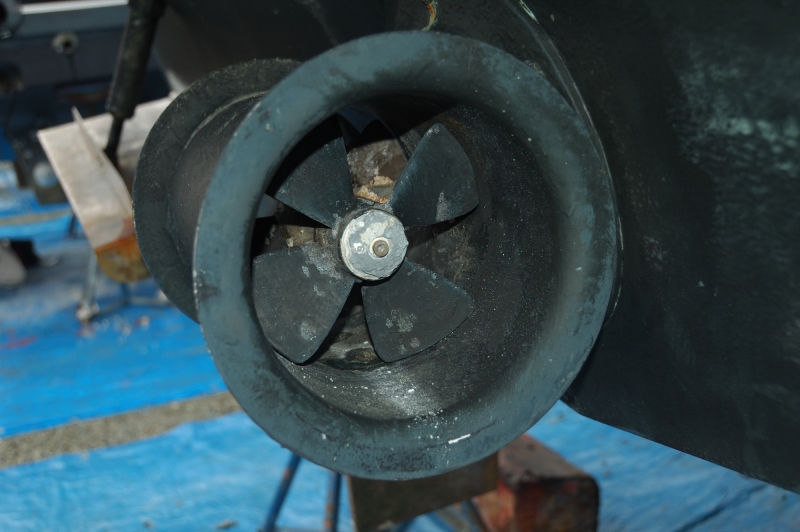Thruster Care
28th July 2022
Once found only on high-end yachts and large cumbersome vessels that needed help to maneuver in tight quarters, thrusters have become much more common in recent years and can be found on boats as small as twenty-two feet. Moving large surfaces sideways through the water requires robust construction for these powerful performers. Installed in a remote location of the boat, they must also be durable to avoid repairs and replacements. Like most hardworking devices, durability relies on proper thruster care and maintenance.

Bow Thruster
Mechanically, thrusters are fairly simple devices, but there are several important thruster care maintenance tasks that are common to all.
The most important thruster care maintenance task is the protection of underwater metal components from galvanic corrosion, by replacing the thruster’s zincs when required. Zinc replacement can be a part of the annual haul-out in most instances, but owners must also consider local conditions that may make it necessary to replace zincs more often.
Maintaining proper lubrication in the thruster’s gearbox is another critical task. The level of the oil in the gearbox reservoir should be checked regularly. Many manufactures recommend the gearbox oil should be changed annually, but the service interval usually can be stretched without consequence for boats that remain in the water for longer periods of time.
Keeping the thruster gear head, propeller and athwartship tunnel free of marine growth is necessary for top performance. Applying antifouling paint all the underwater components except the zinc will help provide prevention from marine growth. Some antifouling paints may require a special primer to ensure proper adhesion to the bronze gear head, but the protection is worth the extra effort.

Stern Thruster
The wiring connections for electric thrusters should be inspected annually. The main cables must carry a high current load, so tight clean connections are critical. Most control cables are engineered to operate in damp environments, but they should still be relieved of any corrosion and be protected with a moisture-displacing contact spray if the problem persists.
The most frequent problem associated with electric thrusters is low operating voltage. While it is most common on boats whose thruster system batteries have been depleted by overuse, it can also be the result of poor electrical connections. The first sign of trouble may be relays that chatter when the thruster is activated, but this may be hard to hear. Staying attuned to any degradation in performance is probably a better way to detect this problem.
Hydraulic thrusters require the same external protective care as electric ones, but the concerns about electrical connections are replaced by the need to regularly inspect plumbing fittings for leakage or inadvertent damage. The level of the hydraulic fluid in the reservoir must be maintained regularly and the fluid kept free of contamination. In-line filters, if fitted, should be checked on a regular basis to make sure they are not impeding the free flow of fluid.
(Deane Hislop – In Partnership with Freedom Marine)


